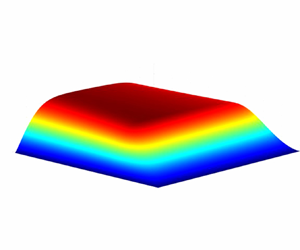Article contents
Compressible high-pressure lubrication flows in thrust bearings
Published online by Cambridge University Press: 31 March 2022
Abstract

We present a detailed derivation of the Reynolds equation and its corresponding energy equation for three-dimensional, steady, laminar, compressible flows of single-phase Navier–Stokes fluids in thrust bearings. These equations are shown to be valid over most of the dense and supercritical gas regime except for the vicinity of the thermodynamic critical point. It is shown that the primary thermodynamic function governing the lubrication flow of high-pressure gases is the effective bulk modulus defined as the ratio of the bulk modulus to the shear viscosity. Numerical solutions to our Reynolds equation are obtained using a finite difference scheme for both moderate and high-speed flows. Approximate solutions to our Reynolds equation for high-speed flows are also derived through a perturbation analysis. It is found that boundary layers form on three out of four edges of the thrust pad. At the inner and outer radii of the pad, the flow is governed by a nonlinear heat equation. As the main flow leaves the pad, the flow is governed by a nonlinear relaxation equation. These three boundary layer solutions are rendered consistent by the construction of boundary layer solutions in the corner regions. A composite solution is developed which provides a single approximation and has the same accuracy as the individual approximations in their respective regions of validity.
- Type
- JFM Papers
- Information
- Copyright
- © The Author(s), 2022. Published by Cambridge University Press
References
REFERENCES
- 2
- Cited by



